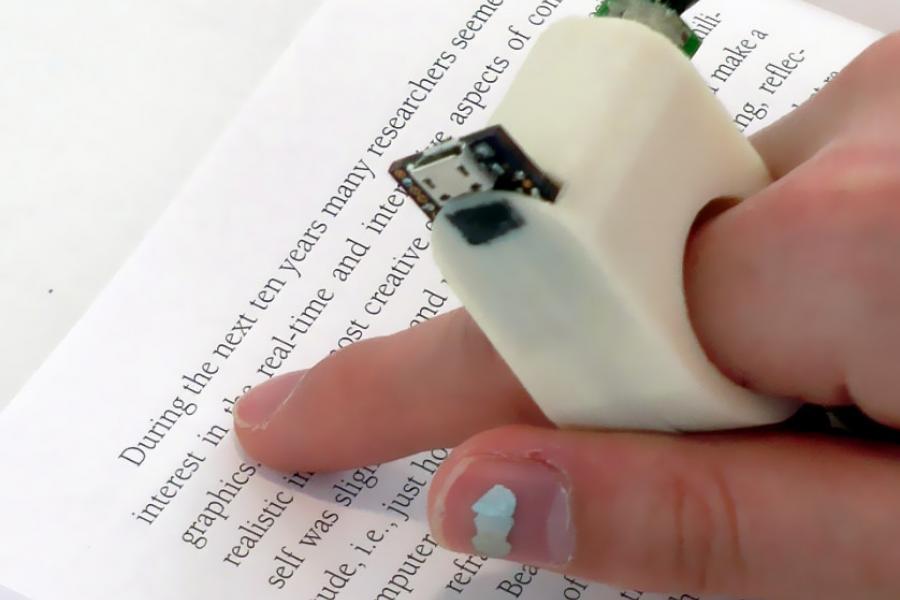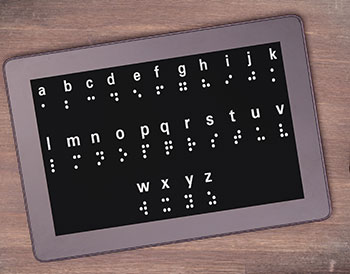Wearable Technology for Low Vision: Making Routines Easier
Wearable Technology for Low Vision: Making Routines Easier
Blog Article
Discover Innovative Devices Made for the Aesthetically Damaged
The growth of ingenious devices for the visually impaired represents a considerable innovation in access and self-reliance. Technologies such as clever glasses with AI capabilities and mobile applications made to provide acoustic descriptions are reshaping day-to-day experiences for users.
Smart Glasses for Navigation

Smart glasses developed for navigation are transforming the way aesthetically damaged people connect with their environment. These advanced gadgets utilize a combination of video camera innovation, expert system, and auditory responses to supply real-time information about environments. By employing obstacle discovery systems, clever glasses can notify customers to possible hazards, allowing much safer wheelchair in both unfamiliar and familiar settings.
The assimilation of GPS modern technology further enhances navigation capacities, allowing individuals to obtain acoustic directions as they relocate. This hands-free approach not only cultivates self-reliance but also encourages aesthetically damaged people to navigate urban landscapes with boosted confidence. Furthermore, lots of wise glasses are furnished with attributes that determine landmarks and road indications, providing contextual info that improves the user experience.
Additionally, the growth of these gadgets is continuously progressing, with business working to enhance the accuracy of things acknowledgment and increase the variety of navigational functions. As clever glasses become a lot more obtainable and affordable, they hold the potential to dramatically transform day-to-day live for visually impaired users. Ultimately, these innovative devices stand for a vital action toward inclusivity, offering enhanced mobility and a higher feeling of freedom for people navigating the world around them.

Mobile Application for Daily Living
Just how can mobile applications improve the everyday lives of visually impaired people? Mobile apps are revolutionizing the method visually damaged individuals browse their settings, take care of everyday tasks, and access info. These applications give necessary support with numerous functionalities, promoting freedom and boosting lifestyle.
Numerous cutting-edge mobile applications are designed particularly for daily living. Apps like Be My Eyes connect aesthetically damaged individuals with sighted volunteers using video clip phone calls, permitting them to receive real-time aid with jobs such as checking out tags or navigating unfamiliar areas. Likewise, Seeing AI, created by Microsoft, utilizes expert system to explain environments, checked out message, and recognize objects, effectively changing a smart device into a powerful tool for everyday support.
In addition, navigation apps customized for the aesthetically impaired, such as Aira and BlindSquare, supply audio-based directions and environmental details, enabling individuals to traverse their surroundings securely and with confidence. Past navigation and prompt support, mobile applications also support company and task monitoring, with attributes that aid customers set pointers, create order of business, and track appointments. In recap, mobile applications offer as vital sources, encouraging aesthetically impaired people to lead more independent and fulfilling lives.
Wearable Technologies for Help
Empowerment through modern technology is progressively obvious in the realm of wearable tools made to aid aesthetically damaged individuals. These ingenious devices incorporate flawlessly into day-to-day life, enhancing navigation and offering essential comments to customers. Wise glasses equipped with cameras can recognize faces and read text out loud, enabling users to interact even more confidently in expert and social setups.
Another noteworthy improvement is the use of haptic feedback systems in wearable gadgets. These systems make use of resonances or other tactile signals to share details regarding the user's environment, such as challenges or adjustments in surface, enhancing flexibility and security. Wearable innovations also consist of wristbands that attach to smartphones, signaling customers to notices through refined resonances, hence enhancing connectivity without reliance on visual cues.
As these innovations proceed to advance, they are not only enhancing self-reliance for aesthetically impaired people however additionally fostering a greater feeling of incorporation in culture. By connecting the gap between obstacles dealt with in day-to-day living and the capacity for autonomy, wearable modern technologies function as essential devices in the pursuit for equality and empowerment for those with visual impairments.
Sound Summary Tools
Audio description tools play an important function in improving availability for aesthetically impaired individuals, offering them with the ability to involve with aesthetic media. AI-powered visual aids. These devices provide narrated summaries of vital visual elements in films, television programs, and live performances, making sure that individuals can completely understand the context and emotions communicated with visuals
Audio description can be integrated into various systems, including streaming services, movie theater screenings, and live cinema. Lots of preferred streaming services currently include audio description as an ease of access attribute, enabling customers to choose it easily. In enhancement to mainstream media, specialized applications also exist, giving audio summaries for art exhibitions, galleries, and other social events.
The performance of audio summary rests on the skill of the narrators, who have to convey visual details succinctly without interfering with the original sound. Advancements in this field are likewise leading the way for more tailored experiences, where individuals can change the degree of detail and pacing according to their preferences.
Braille Innovations and Devices
Braille innovations and devices have actually substantially transformed the way visually damaged individuals engage with text and details. Modern innovations have actually led to the advancement of flexible devices that enhance proficiency and self-reliance among individuals.
In addition, mobile Braille notetakers integrate traditional Braille input with modern functionalities, promoting note-taking, scheduling, and file editing on the go. Voice-activated assistive devices. These portable tools typically include text-to-speech capabilities, bridging the space between Braille and acoustic information
Furthermore, ingenious Braille printers have arised, allowing individuals to create Braille labels, records, and instructional materials successfully. This availability cultivates better participation in specialist and educational environments, ultimately advertising click over here inclusivity.
Additionally, research into smart Braille innovations proceeds to expand. Tools that include synthetic knowledge are being discovered to provide real-time navigation support and contextual info, boosting this post the individual experience in diverse setups. Overall, these innovations reflect a dedication to encouraging visually damaged people with modern technology, guaranteeing they can quickly gain access to and engage with the globe around them.

Verdict
The improvement of ingenious tools for the aesthetically impaired considerably improves self-reliance and quality of life. These innovations not just foster better incorporation but also advertise autonomy in daily tasks, inevitably adding to a much more fair and accessible society for aesthetically damaged individuals.
As clever glasses come to be extra easily accessible and budget friendly, they hold the prospective to dramatically transform everyday life for visually impaired customers. Mobile apps are reinventing the way aesthetically damaged individuals browse their atmospheres, handle day-to-day jobs, and accessibility details. Apps like Be My Eyes attach aesthetically impaired individuals with sighted volunteers through video clip phone calls, enabling them to receive real-time help with tasks such as reviewing tags or navigating unknown rooms.Furthermore, navigation apps customized for the visually impaired, such as Aira and my explanation BlindSquare, use audio-based directions and environmental information, allowing customers to traverse their surroundings securely and confidently.The development of innovative tools for the aesthetically damaged dramatically enhances freedom and top quality of life.
Report this page